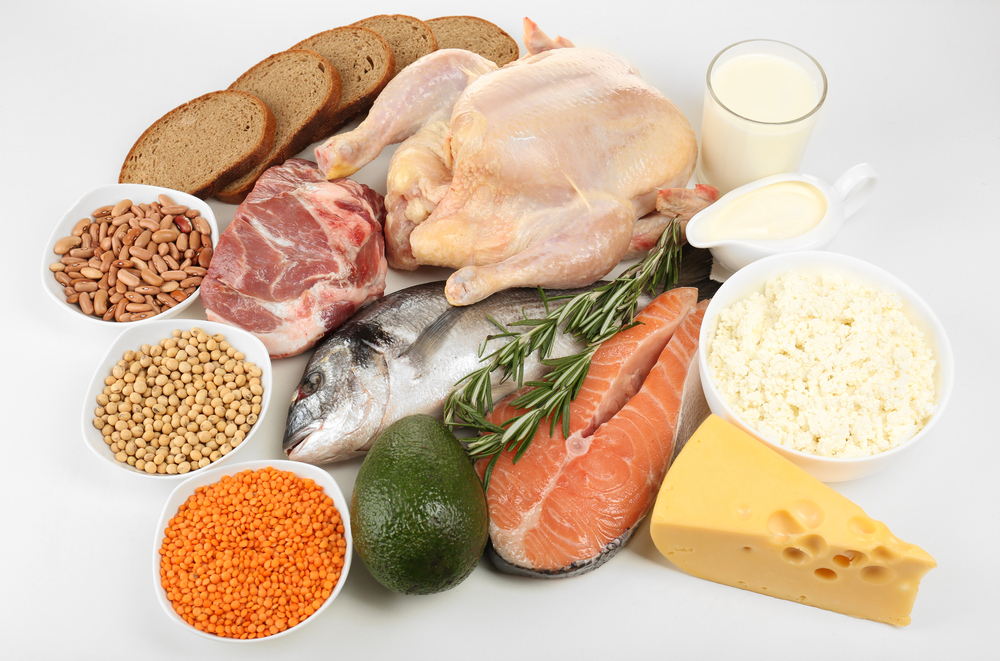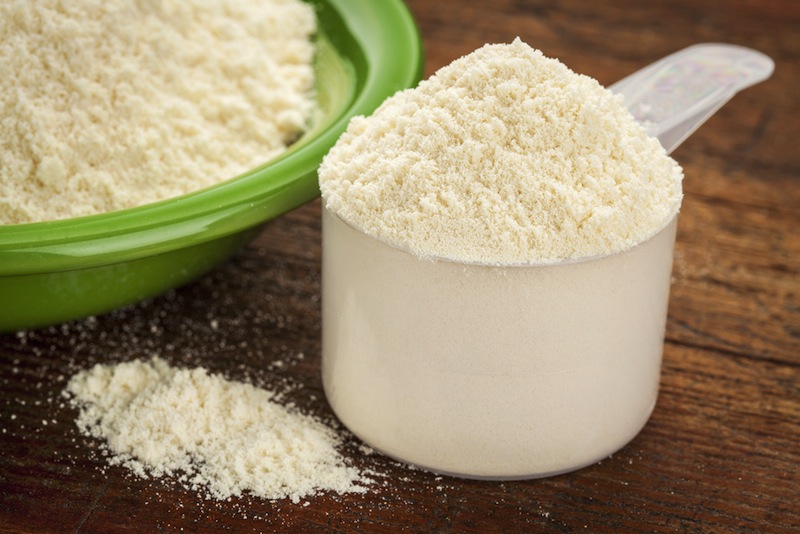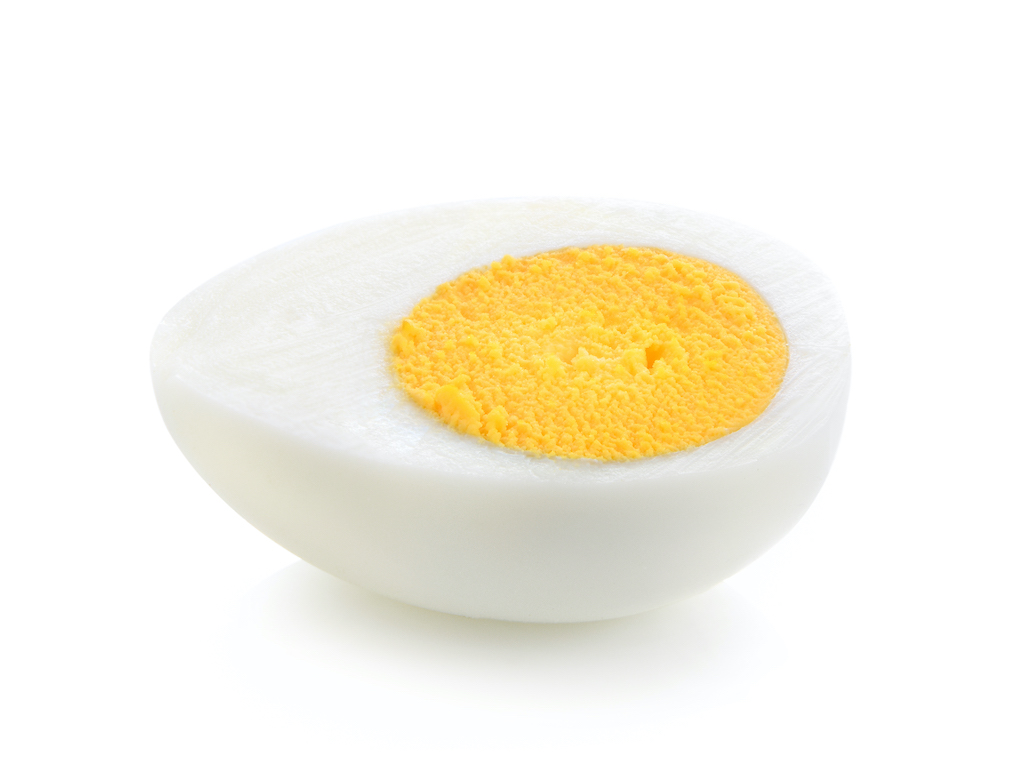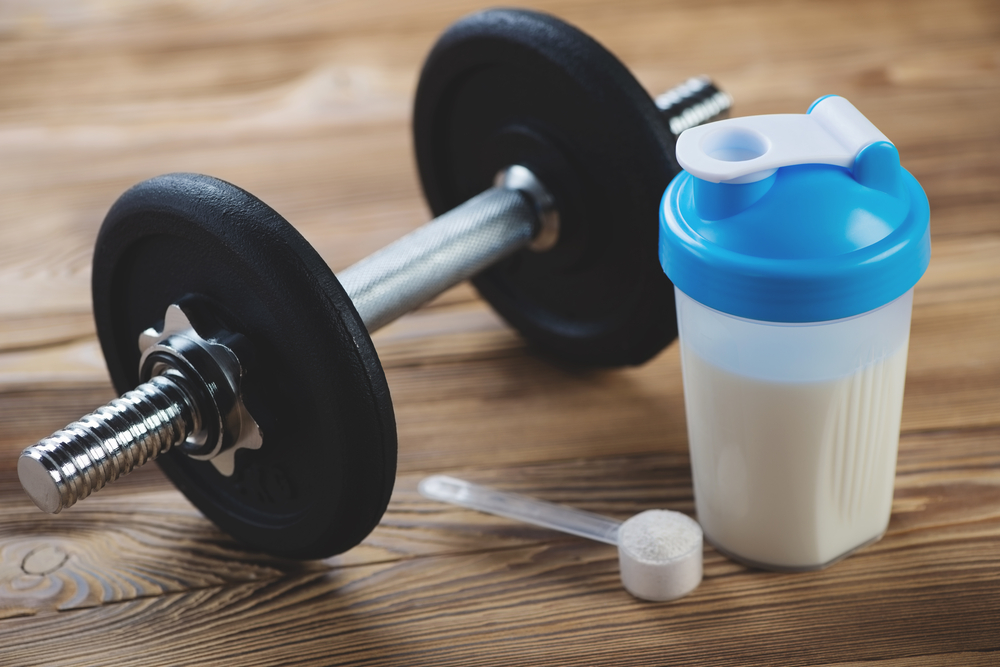What is protein?
Protein is a macronutrient that is essential to building muscle mass. It is commonly found in animal products, though is also present in other sources, such as nuts and legumes.

Protein is a macronutrient that is essential to building muscle mass. It is commonly found in animal products, though is also present in other sources, such as nuts and legumes.
The word protein comes from the Greek "protos," which "reflects protein's top- shelf status in human nutrition," Harvard Health reported.
According to Victoria Taylor, a dietitian at the British Heart Foundation: "Macronutrients are the nutrients we need in larger quantities that provide us with energy. In other words, fat, protein and carbohydrates." The body requires large amounts of macronutrients to sustain life, hence the term "macro," according to the University of Illinois McKinley Health Center. Each gram of protein contains 4 calories. Protein makes up about 15% of a person's body weight.
Why is protein important?
Chemically, protein is composed of amino acids, which are organic compounds made of carbon, hydrogen, nitrogen, oxygen or sulfur. Just as amino acids are the building blocks of proteins, proteins are the building blocks of muscle mass, according to the National Institutes of Health (NIH).
"When protein is broken down in the body it helps to fuel muscle mass, which helps metabolism," said Jessica Crandall, a registered dietitian nutritionist, certified diabetes educator and national spokesperson for the Academy of Nutrition and Dietetics. "It also helps the immune system stay strong. It helps you stay full. A lot of research has shown that protein has satiety effects."

For example, research has shown that satiety, or feeling full after a meal, improved after consuming a high-protein snack. In a study published in 2014 in the journal Nutrition, researchers compared afternoon snacks of high-protein yogurt, high-fat crackers and high-fat chocolate. Among the women who participated in the study, consuming the yogurt led to greater reductions in afternoon hunger versus the chocolate. These women also ate less at dinner compared with the women who snacked on crackers or chocolate.
A similar study published in 2015 in the Journal of Nutrition found that adolescents who consumed high-protein afternoon snacks showed reduced appetite, satiety and diet quality. The teens also had improved moods and better cognition.
Get the world’s most fascinating discoveries delivered straight to your inbox.
How much protein is healthy?
The U.S Department of Agriculture recommends that 10% to 35% of daily calories come from protein. How that equates to grams of protein depends on the caloric needs of the individual. According to the U.S. Department of Agriculture, the amount of protein-rich foods a person should eat depends on age, sex and level of physical activity.
""A safe level of protein ranges from 0.8 grams of protein per kilogram of body weight [2.2 lbs.], up to 2 grams of protein per kilogram for very active athletes,"" said Crandall. ""But most Americans truly need to be eating about 1 to 1.2 grams of protein per kilogram of body weight."" The NIH has detailed recommendations for the amount of nutrients an individual should consume.
"Most people need 20 to 30 grams of protein per meal," said Crandall. "For example, that"s 2.5 egg whites at breakfast or 3 to 4 ounces of meat at dinner." Most American women are not getting anywhere close to adequate protein at breakfast, according to Crandall. ""That could be hindering their muscle mass, their metabolism and their hormone levels.""
Crandall cautioned parents against stressing protein consumption for their children, who typically get sufficient protein. "It's important to focus on fruits and vegetables for kids, but protein supplementation for kids is going overboard," she said. When considering how to get protein into kids' diets, parents should focus on whole foods and natural sources.
What are sources of protein?

All food made from meat, poultry, seafood, beans and peas, eggs, processed soy products, nuts and seeds are considered part of the protein group, according to the USDA. For people who don't eat meat, soy, hemp and whey are good sources of protein. Crandall said that all are good options and it comes down to personal preference. For example, whey protein is better for building and regenerating muscle mass, so people looking to bulk up or who exercise a lot may prefer it.
Whey protein is a byproduct of the cheese-making process and therefore not vegan. It is typically found in supplements, such as protein powders, according to Medical News Today. There are 20 grams (0.7 ounces) of protein per scoop of whey protein.
Hemp protein comes from the hemp plant, which does not have THC (the active ingredient in marijuana), according to the North American Industrial Hemp Council. Hemp is available as seeds, a powder and milk. According to Healthline, 30 grams of hemp seeds (around 2-3 tablespoons) provide roughly 11 grams of protein.
Soy protein comes from soybeans and is available in many different forms, including milk, tofu, various meat substitutes, flour, oil, tempeh, miso nuts and edamame, according to the University of California San Francisco Medical Center. "Soy has been shown to have a little more phytoestrogens in it from isoflavones, which really helps to increase antioxidants," she said. "But a lot of people are hesitant to do soy because of a myth that associates it with breast cancer. But that myth has been minimized based off of a large body of evidence that supports the actual anticancer properties that soy has."
To get the maximum benefits from soy, Crandall recommended eating whole sources, such as edamame. Processed forms such as tofu are the next best option, followed by protein powders and drinks.
Which foods are high in protein?
According to Matthew Kadey, a registered dietitian writing for Bodybuilding.com, some high-protein meats include:
- Top or bottom round steak (23 grams of protein per 3-ounce serving)
- Lean ground beef (18 grams per 3-ounce serving)
- Pork chops (26 grams per 3-ounce serving)
- Skinless chicken breast (24 grams per 3-ounce serving)
- Turkey breast (24 grams per 3-ounce serving)
- Sockeye salmon (23 grams per 3-ounce serving)
- Yellowfin tuna (25 grams per 3-ounce serving)
High-protein dairy foods include:
- Greek yogurt (23 grams per 8-ounce serving)
- Cottage cheese (14 grams per half-cup serving)
- Eggs (6 grams per large egg)
- 2 percent milk (8 grams per cup)
Some other high-protein foods are:
- Some canned foods, like sardines, anchovies and tuna average around 22 grams of protein per serving
- Navy beans (20 grams per cup)
- Lentils (13 grams per quarter-cup)
- Peanut butter (8 grams per 2 tablespoons)
- Mixed nuts (6 grams per 2-ounce serving)
- Quinoa (8 grams per 1-cup serving)
- Edamame (8 grams per half-cup serving)
- Soba noodles (12 grams per 3-ounce serving)
Complete or ideal proteins
People can produce some amino acids, but they must get others from food. The body needs 20 amino acids in total, nine of which the body cannot produce and are called "essential amino acids," according to Medical News Today. Essential amino acids are: histidine, isoleucine, leucine, lysine, methionine, phenylalanine, threonine, tryptophan and valine.
Protein foods that contain all essential amino acids are called complete proteins, according to Crandall. They are also sometimes called ideal proteins or high-quality proteins. Complete proteins include meat and dairy products, quinoa, hemp seeds, chia seeds and soy.
Many plant-based proteins are not complete proteins. These include beans, grains and legumes as well as vegetables, which contain small amounts of protein. According to the University of Massachusetts at Amherst, incomplete proteins can be combined to create complete proteins and include: beans and rice; peanut butter and whole grain bread; and macaroni and cheese.
For a long time, nutritionists thought that complementary proteins had to be eaten together to make a complete protein. "But it is now understood that the foods don't have to be eaten at exactly the same time," said Crandall. As long as you eat a wide variety of foods, you can usually make complete proteins, even if you're a vegetarian.
What is a high-protein diet?

The Dietary Guidelines for Americans recommend that protein should comprise 10-35% of an adult’s daily calorie intake. According to Medical News Today, men get 16.3% of their calories from protein and women 15.8%. However,most commercial high-protein diet plans suggest intakes in the upper levels of the recommended spectrum. For example, the Atkins diet allows for up to 29% of calories to come from protein, and the South Beach Diet suggests protein levels at about 30%. Some high-protein diets, however, come in at higher than 35%.
The efficacy and safety of high-protein diets is still being studied, according to LiveScience. Often, these diets lead to a quick drop in weight-loss, but their overall sustainability is unclear. One 2014 review of high-protein diet studies found that "diets high in protein have considerable beneficial effects on satiety and weight control, which is of great interest to e.g. obese individuals."
However, high-protein diets can carry some health risks. They usually advocate cutting carbohydrates, which can lead to nutritional deficiencies, fiber deficiencies, headache, constipation, increased risk of heart disease and worse kidney function in those suffering from kidney disease, according to the Mayo Clinic.
Crandall does not recommend high-protein diets because they are generally unnecessary. "There's a growing body of research that suggests that Americans are getting enough protein," she said. The problem is that we don't space out our protein correctly. "It's more important that we focus on getting protein at each meal, eating it within the first hour of waking up and then every 4 to 6 hours thereafter."
Getting enough protein at adequate intervals helps muscle mass and overall health long term.
Crandall is also skeptical of protein-enhanced foods. "There are a lot of products now that have protein added. But is that getting you full? Is that getting you what you need? Make sure you're thinking about meal planning a little bit … don't let that become the go-to option for meals."
What is the ideal protein diet?
The Ideal Protein diet is a medically developed diet plan created more than 20 years ago by French doctor Tran Tien Chanh. A coach at a licensed clinic or a health care provider supervises participants. For some participants, consent from health care providers may be required.
The Ideal Protein diet is a low-carbohydrate, low-calorie, high-protein diet that aims to aid in weight loss by providing the body with the right amount and kind of protein while also stabilizing blood sugar. It consists of four phases. During the first three phases, participants eat at least one proportioned, prepackaged Ideal Protein meal per day. During phase one, in which most of the weight loss takes place, participants eat three Ideal Protein meals every day.
Protein shakes and protein powders

"Supplements are for supplemental purposes only," said Crandall. Therefore, she does not recommend having protein shakes or powders on a daily basis. Sometimes, however, people have serious behavioral barriers to eating whole foods. "If they feel like they can't cook or eat whole foods … [protein shakes] can be a good plan B."
If you are going to use protein powders, Crandall recommends choosing one that has more than 20 grams of protein. "Most Americans want to shoot for lower-calorie, lower-carbohydrate drinks," she said.
It is important to think about what you're adding to protein shakes. If you're using a protein powder to make a shake, Crandall suggests mixing it with water, nonfat milk or a milk substitute. "I strongly suggest not mixing fruit in — it can become very calorie-laden — like pie in a cup." Adding vegetables, however, can add antioxidants and vitamins.
The most convenient way to blend your ingredients is to use a protein shaker, which is a bottle specifically designed for mixing protein powders. Check our guide on best protein shakers to find a product that suits your needs the most!
Additional resources
Jessie Szalay is a contributing writer to FSR Magazine. Prior to writing for Live Science, she was an editor at Living Social. She holds an MFA in nonfiction writing from George Mason University and a bachelor's degree in sociology from Kenyon College.


